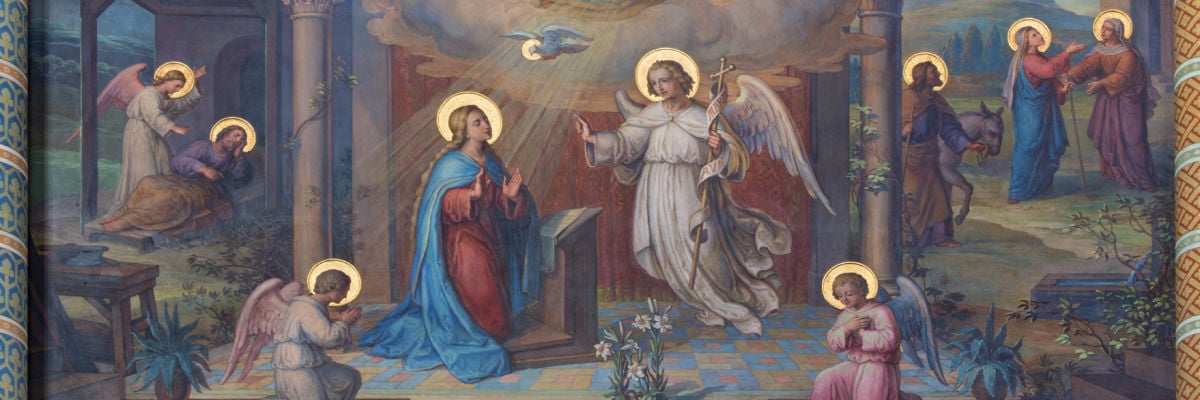
In what is among the most simple and beautiful prayers in the Torah, Moses fervently prays for God to dwell “in the midst of” his people. It is a seemingly praiseworthy request, and yet God’s answer is a firm “no.” God’s refusal was not because of any lack of desire on his part; God’s will was always to dwell in the midst of his people. The problem was Israel’s sins.
The Lord said to Moses . . . go up to a land flowing with milk and honey; but I will not go among you, lest I consume you in the way, for you are a stiff-necked people (Exod. 33:3).
For the Lord had said to Moses, “Say to the people of Israel, You are a stiff-necked people; if for a moment I should go up among you, I would consume you” (Exod. 33:5).
God says he could have dwelt among them—but he would have destroyed them if he had! And yet in spite of the dire warnings, Moses entreats the Lord anyway, in Exodus 34:9, with this prayer:
If now I have found favor in thy sight, O Lord, let the Lord, I pray thee, go in the midst of us, although it is a stiff-necked people; and pardon our iniquity and our sin, and take us for thy inheritance.
When I said Moses’ petition would not be granted, that was true, but incomplete. It would be more correct to say it would not be granted in his lifetime, or even in the context of the Mosaic Covenant. Because of the sins of Israel, God would dwell only in the Ark of the Covenant made of wood and gold, in the tabernacle in the wilderness, and later on in the Temple.
However, the God-inspired longing of Moses’ heart would one day be realized. Multiple prophets subsequent to the time of Moses prophesied that God would indeed one day dwell in the midst of his people. But this ancient promise would find its fulfillment only in Jesus Christ . . . and in his mother.
Let us first consider the prophet Isaiah. In the first eight chapters of the book that bears his name, in good prophetic tradition, Isaiah brings a message of stern warning to Israel (and the surrounding nations) because of their abundant sins. But in later chapters, we also see the promise of the coming Messiah. For our purpose, we’ll focus on chapters eleven and twelve. You’ll want to take note of how many times the inspired author prophesies of that day, which refers to the coming of the Messiah and the New Covenant.
There shall come forth a shoot from the stump of Jesse, and a branch shall grow out of his roots. And the Spirit of the Lord shall rest upon him, the spirit of wisdom and understanding, the spirit of counsel and might, the spirit of knowledge and the fear of the Lord. . . . In that day the root of Jesse shall stand as an ensign to the peoples. . . In that day the Lord will extend his hand yet a second time to recover the remnant which is left of his people. . . . You will say in that day: “I will give thanks to thee, O Lord, for though you were angry with me, your anger turned away. . . . Shout, and sing for joy, O inhabitant of Zion, for great in your midst is the Holy One of Israel” (11:1-2,10-11; 12:1,6).
The promise of the Lord dwelling in the midst of Israel was just that: a promise for the future.
And we should further note that in Isaiah and elsewhere, “the inhabitant of Zion” is also referred to as “the daughter of Zion” or even “the virgin daughter of Zion.” For example, in Isaiah 37:22, Isaiah prophesies against Assyria, who had conquered Israel:
[Assyria] despises you, she scorns you—the virgin daughter of Zion; she wags her head behind you—the daughter of Jerusalem (Isa. 37:22; cf. Jer. 14:17; Lam. 2:13).
In Zephaniah, we find similar language. The Lord chastises Israel resoundingly for its sins, but then he promises through the message of the prophet:
“Therefore wait for me,” says the Lord, “for the day when I arise as a witness. . . . On that day you shall not be put to shame. . . . For they shall pasture and lie down, and none shall make them afraid. Sing aloud, O daughter of Zion; shout, O Israel! Rejoice and exult with all your heart, O daughter of Jerusalem. . . . The King of Israel, the Lord, is in your midst (3:8, 11, 13-15).
Finally, after urging the Israelites to repent of their sins, Zechariah also prophesies: “Sing and rejoice, O daughter of Zion; for lo, I come and I will dwell in the midst of you, says the Lord” (2:10).
We now fast-forward to Luke 1:28. Luke records the greeting of the angel: “Hail, full of grace, the Lord is with you!” There are two keys to understanding this text in relation to Mary as the fulfillment of the ancient “daughter of Zion” prophecies.
- The Greek word for hail is kaire, which can also be translated rejoice. In fact, the New King James Version of the Bible translates it as “rejoice, highly favored one!” Because this “new name”—kecharitomene—is in the feminine, we could also translate it as “Rejoice, favored woman.”
- The angel does not say, “The Lord shall be with you”; he says, “The Lord is with you.”
Could this hearken back to the “daughter of Zion” prophecies of old? There is really no biblical way around it. The ancient prayer of Moses was definitively answered in and through what was likely to have been about a fifteen-year-old young woman named Mary, and in a way beyond the wildest imaginings of the ancient prophets. Because of her “yes,” after all of those centuries in waiting, God would finally dwell “in the midst of his virgin daughter of Zion.”
Indeed, this verse becomes an excellent example of what Scripture scholars refer to as the polyvalent or multi-layered nature of Scripture. The angel’s greeting signals not only that Mary is “full of grace,” but also that she is the true “Daughter of Zion.”
So how does this relate to Mary being free from sin? We saw before that it was the sin of Israel that prevented God from dwelling “in the midst of” “the virgin daughter of Zion.” How fitting for the New Covenant daughter of Zion—in the midst of whom the Lord would dwell bodily—to be free from all sin. The obstacle that kept God from dwelling in the midst of his people had been eliminated through Mary’s immaculate conception, and Mary becomes the archetype of the Church—“holy and without blemish” (Eph. 5:27).
On one level, since she was “full of grace,” Mary was the fulfillment of the prophecies concerning the daughter of Zion even before the Incarnation. And yet, there was more to come. Mary’s fullness of grace had prepared the New Covenant daughter of Zion for something the Old Covenant people of God could never have fathomed. It was grace that made her fit to be a worthy vessel to bear the King of Glory in her body. The fulfillment of God’s promise would not be complete, then, until Mary conceived Jesus in her womb.
[Rejoice], full of grace, the Lord is with you! . . . The power of the Most High will overshadow you; therefore the child to be born will be called . . . the Son of God (Luke 1:28-35).
I suppose an entire volume could be written on the significance of these prophecies. But I will conclude our thoughts here with a section from the Catechism and its succinct teaching on the significance of Mary as daughter of Zion, in whom God promised he would dwell:
The Holy Spirit prepared Mary by his grace. It was fitting that the mother of him in whom “the whole fullness of deity dwells bodily” should herself be “full of grace.” She was, by sheer grace, conceived without sin as the most humble of creatures, the most capable of welcoming the inexpressible gift of the Almighty. It was quite correct for the angel Gabriel to greet her as the “daughter of Zion”: “Rejoice” (CCC 722).



